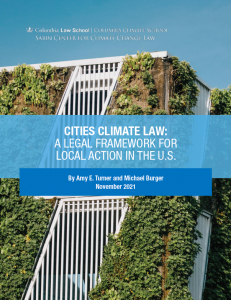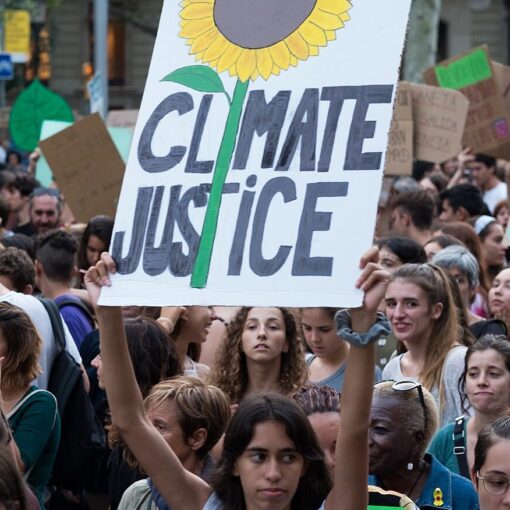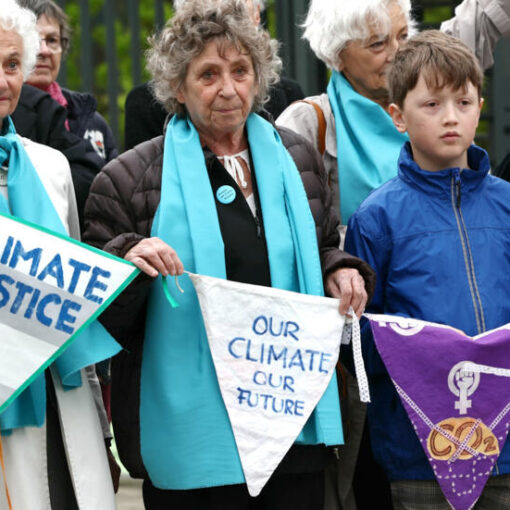 Cities around the U.S. have long demonstrated leadership on climate change, with more than 170 of them having set targets to phase out fossil energy and many others committing to net zero greenhouse gas emissions. American cities, towns, counties, and other forms of local government have pioneered path-setting approaches to economy-wide decarbonization, including market-moving clean energy procurements, remaking the building construction landscape, routing polluting vehicles out of center cities, and much more. Many of these cities have also foregrounded equity and climate justice in their carbon mitigation policies, seeking to improve everyday lived experiences for frontline residents.
Cities around the U.S. have long demonstrated leadership on climate change, with more than 170 of them having set targets to phase out fossil energy and many others committing to net zero greenhouse gas emissions. American cities, towns, counties, and other forms of local government have pioneered path-setting approaches to economy-wide decarbonization, including market-moving clean energy procurements, remaking the building construction landscape, routing polluting vehicles out of center cities, and much more. Many of these cities have also foregrounded equity and climate justice in their carbon mitigation policies, seeking to improve everyday lived experiences for frontline residents.
A new Sabin Center report, Cities Climate Law: A Legal Framework for Local Action in the U.S., by Amy Turner and Michael Burger, offers a comprehensive guide for local law- and policy-makers in developing climate programs that consider and comport with federal and state law. While cities face considerable legal hurdles in enacting local climate policy, they also have significant authority to develop novel policies that can slash greenhouse gas emissions while cutting local air pollution, expanding access to opportunity, and making our cities more equitable places to live, work, and play. Cities Climate Law can help local governments move from pledges to action by demystifying the legal context in which they develop climate policy.
The law of carbon mitigation at the local level is a broad discipline, straddling federal, state, and local laws, regulations, requirements, programs, and other actions. It draws from bodies of law as diverse as environmental, energy, municipal, construction, contractual, vehicle and traffic, civil rights, constitutional, and privacy law, and applies to carbon-reducing activities across the building, transportation, energy, and waste sectors. It is also informed by the significant work done by environmental justice and climate justice law and policy experts and advocates.
Cities Climate Law delineates the legal context applicable to the following areas:
Cross-cutting legal concepts: Local governments, as “creatures of the state,” have no more authority than that delegated to them by the states in which they are located. As such, certain legal basics apply across all areas of local climate policymaking, including a city’s authority under a municipal home rule or a Dillon’s rule framework; preemption by state and federal law; federal constitutional restrictions relating to the dormant Commerce Clause, the Equal Protection Clause of the Fourteenth Amendment, and other provisions; and state and local land use law. Though there are limitations on how cities may regulate, a solid understanding of this context makes clear that local governments have significant carbon mitigation policy opportunities available to them.
Equity: Climate policy and issues of justice and equity are interwoven at all levels of government, but perhaps nowhere more so than locally – in the places where people live and build community. Equity considerations – both potential inequitable policy impacts and the prospect of improving lived experiences for frontline residents – are central to all areas of local climate policy. Cities Climate Law identifies the sources of law underpinning a right to equitable and just climate policy and charts an agenda for future research in this area.
Buildings: A substantial amount of law governs the construction of new buildings and the maintenance of existing buildings. Local governments have significant legal authority relating the health and wellbeing of residents through the police power, and as such are central to overseeing the decarbonization of this significant source of greenhouse gas and local air pollution. Local building decarbonization law includes considerations relating to state and federal preemption, building codes, energy procurement requirements, land use and zoning, privacy and data security, and more.
Transportation: Local governments’ authority to regulate the transportation sector is shaped by federal and state vehicle and traffic laws, but there remains substantial room for local governments to govern with respect to local roads, traffic enforcement, public transit, and active transportation options like cycling and walking. Legal considerations include those relating to federal and state preemption, land use and building codes, and road tolling.
Energy: Energy law is largely set at the state and federal level, but local governments have significant latitude to increase the uptake of renewable energy as market participants, local regulators, and large stakeholders in the electricity regulatory process. With respect to utility-scale renewable energy, local legal considerations include the state energy regulatory framework for power purchases. Other legal tools that can be leveraged to catalyze clean energy development, including at the distributed scale, include franchise agreements, land use and building code requirements, and community solar programs.
Waste: While the waste sector produces a relatively small percentage of a city’s greenhouse gas emissions, waste processing emits a significant amount of methane, a greenhouse gas significantly more potent than carbon dioxide. Waste decarbonization plays out in the context of the dormant Commerce Clause of the U.S. Constitution, state law relating to facility siting and preemption, local agency authority, and contracts with waste haulers and processors.
The law can present obstacles to policy implementation, and it can provide the vehicle to success. Cities must consider how to structure their policies to comport with federal and state law. And given variable conditions and contexts, cities can’t simply “copy and paste” climate policies that have been successful elsewhere. They must consider the shape and extent of their own legally delegated authority.
The Cities Climate Law report demystifies these and other knotty legal questions so that law- and policy-makers can craft informed, creative carbon mitigation policies that address local political and policy concerns while staying within legal bounds, reducing the risk that action will be undone by the courts. The report can be found here.





